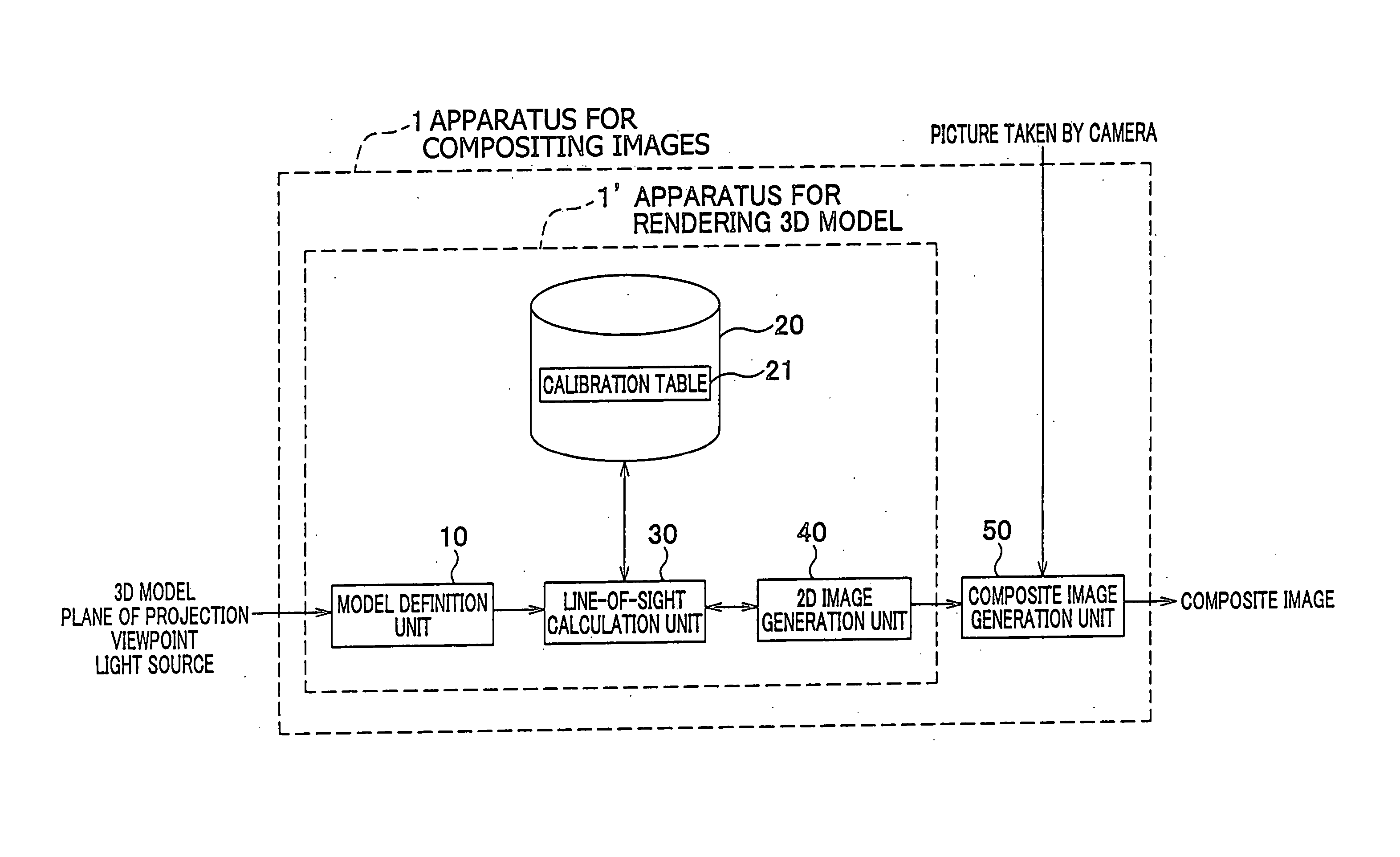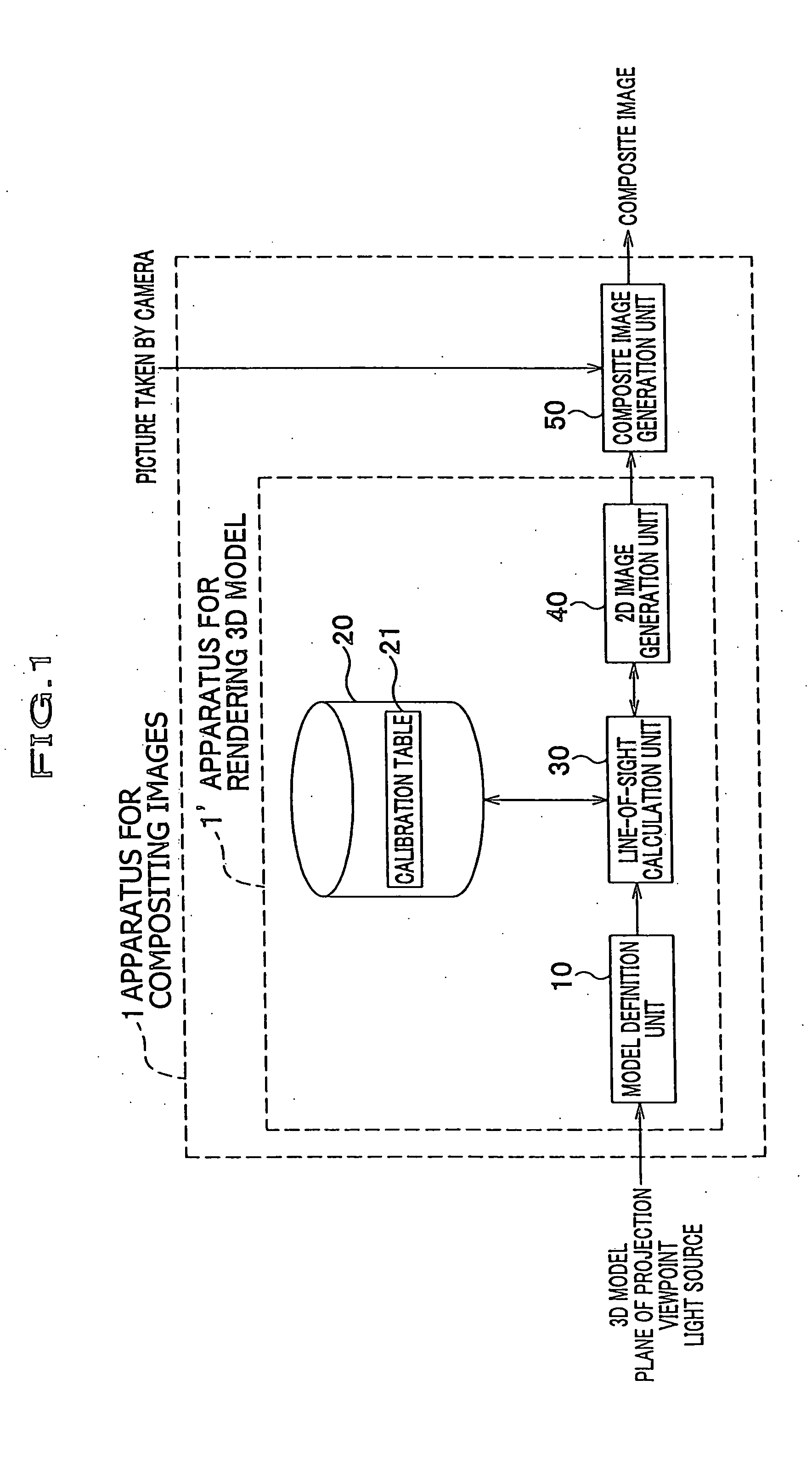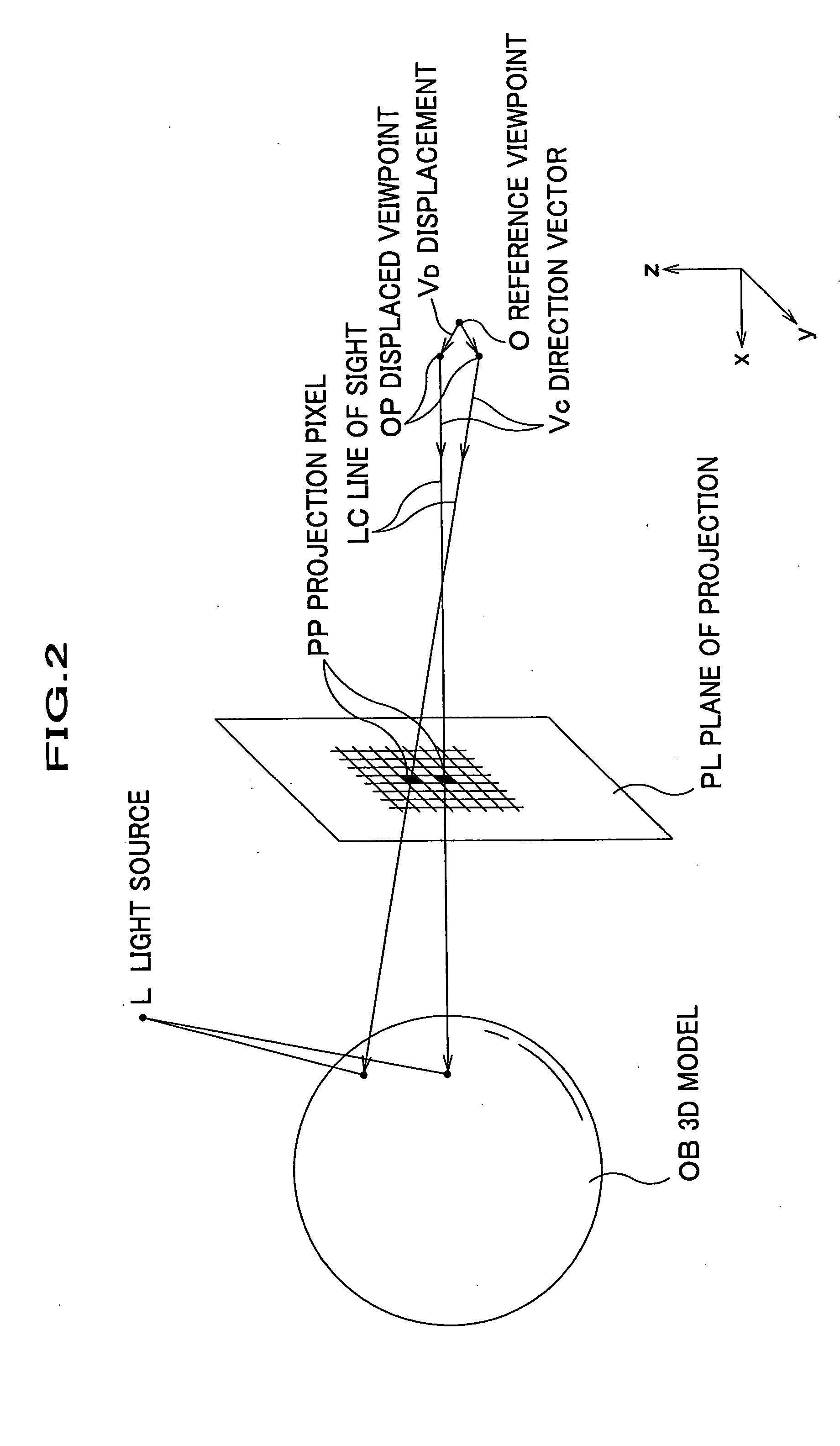Method, apparatus and program for compositing images, and method, apparatus and program for rendering three-dimensional model
a technology of compositing images and programs, applied in the field of compositing images, can solve the problems of cg image, nonlinear distortion of image taken by camera lens systems, and inability to produce incident light,
- Summary
- Abstract
- Description
- Claims
- Application Information
AI Technical Summary
Benefits of technology
Problems solved by technology
Method used
Image
Examples
Embodiment Construction
A detailed description of exemplified embodiments of the present invention will be given with reference to the drawings. First, the optical property of the real-world (“non-pinhole”) camera will be described in which rays of incident light does not travel through a single point and thus such distortion in images as could appear in the pinhole camera is eliminated. Next described is calibration data that represents the optical property of the non-pinhole camera in numerical form. Subsequent descriptions will give an idea of a calibration table which includes such calibration data, and illustrate a method of acquiring the calibration data for each pixel of an image taken by a camera to generate the calibration table. Further, a description will be given of apparatuses for compositing images and for rendering an image, which utilizes the calibration table, as exemplary embodiments of the present invention.
[Optical Property of Non-Pinhole Camera]
Referring now to FIG. 7, the mechanism ...
PUM
 Login to View More
Login to View More Abstract
Description
Claims
Application Information
 Login to View More
Login to View More - R&D
- Intellectual Property
- Life Sciences
- Materials
- Tech Scout
- Unparalleled Data Quality
- Higher Quality Content
- 60% Fewer Hallucinations
Browse by: Latest US Patents, China's latest patents, Technical Efficacy Thesaurus, Application Domain, Technology Topic, Popular Technical Reports.
© 2025 PatSnap. All rights reserved.Legal|Privacy policy|Modern Slavery Act Transparency Statement|Sitemap|About US| Contact US: help@patsnap.com



